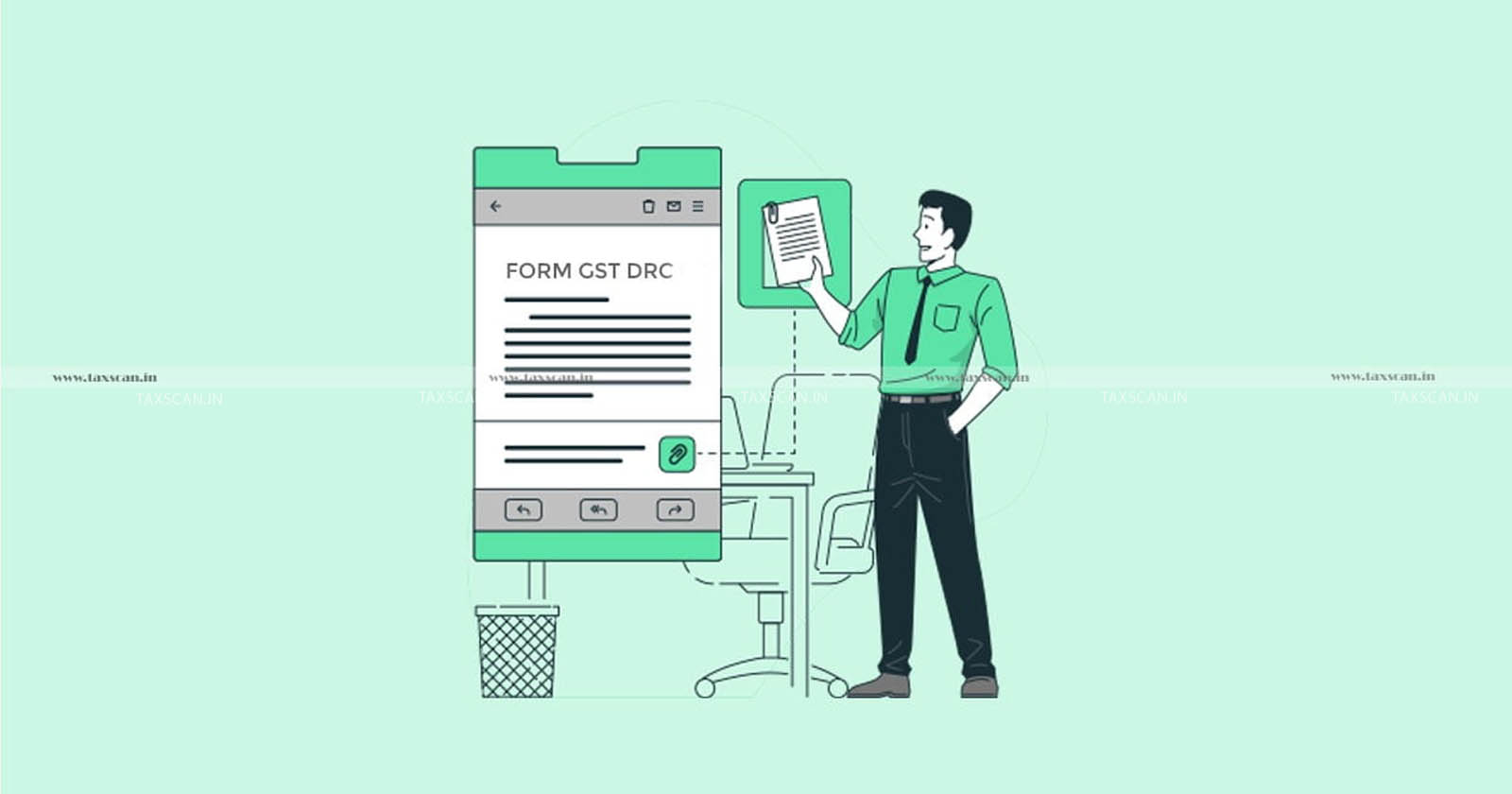GST DRC Forms Explained: What Every Aspiring CA Must Know
A complete guide to all 28 GST DRC forms, detailing their legal basis, usage, and critical role in tax demand, recovery, and compliance procedures essential for aspiring Chartered Accountants

Under the Indian Goods and Services Tax (GST) regime, demand and recovery processes are formalized through a structured set of DRC (Demand and Recovery Certificate) forms. These forms serve as standardized instruments for communication between taxpayers and tax authorities regarding tax dues, show cause notices, voluntary payments, recovery proceedings, appeals, and related matters.
This article provides a detailed overview of all 28 GST DRC forms, including their statutory basis, purpose, issuing authority, recipient, and relevance to practitioners, particularly aspiring Chartered Accountants (CAs) who regularly assist clients with GST compliance and dispute resolution.
I. Complete List of GST DRC Forms
| Form | Relevant Rule | Purpose | Issued By | Issued To |
| DRC-01A | Rules 142(1A), 142(2A) | Pre-show cause notice intimation of ascertained tax liability | Proper Officer | Taxpayer |
| DRC-01 | Rules 100(2), 142(1)(a) | Summary of Show Cause Notice (SCN) | Proper Officer | Taxpayer |
| DRC-02 | Rule 142(1)(b) | Summary of Statement under SCN | Proper Officer | Taxpayer |
| DRC-03 | Rule 142(1)(c) | Voluntary payment or response to SCN | Taxpayer | Proper Officer |
| DRC-04 | Rule 142(2) | Acknowledgement of voluntary payment | Proper Officer | Taxpayer |
| DRC-05 | Rule 142(3) | Intimation of conclusion of proceedings | Proper Officer | Taxpayer |
| DRC-06 | Rule 142(4) | Reply to SCN | Taxpayer | Proper Officer |
| DRC-07 | Rule 142(5) | Summary of the final order | Proper Officer | Taxpayer |
| DRC-07A | Rule 142A(1) | Summary of demand under pre-GST laws | Proper Officer | Taxpayer |
| DRC-08 | Rule 142(7) | Rectification/withdrawal of order | Proper Officer | Taxpayer |
| DRC-08A | Rule 142A(2) | Modification of demand under existing laws | Proper Officer | Taxpayer |
| DRC-09 | Rule 143 | Recovery order through a specified officer | Proper Officer | Specified Officer |
| DRC-10 | Rule 144(2) | Notice for auction of seized goods | Proper Officer | Defaulter |
| DRC-11 | Rules 144(5), 147(12) | Notice to successful bidder in auction | Proper Officer | Successful Bidder |
| DRC-12 | Rules 144(5), 147(12) | Sale certificate for auctioned goods | Proper Officer | Successful Bidder |
| DRC-13 | Rule 145(1) | Notice to third party for recovery | Proper Officer | Third Party |
| DRC-14 | Rule 145(2) | Certificate of payment by third party | Proper Officer | Third Party |
| DRC-15 | Rule 146 | Application to civil court for decree execution | Proper Officer | Magistrate/Civil Judge |
| DRC-16 | Rules 147(1), 151(1) | Attachment and sale of property | Proper Officer | Defaulter |
| DRC-17 | Rule 147(4) | Notice for property auction | Proper Officer | Defaulter |
| DRC-18 | Rule 155 | Certificate for action under section 79(1)(e) | Proper Officer | Revenue Authority |
| DRC-19 | Rule 156 | Application to Magistrate for recovery as fine | Proper Officer | Magistrate |
| DRC-20 | Rule 158(1) | Application for deferred payment or installments | Taxpayer | Commissioner |
| DRC-21 | Rule 158(2) | Order accepting or rejecting deferred payment | Commissioner | Taxpayer |
| DRC-22 | Rule 159(1) | Provisional attachment of property | Commissioner | Taxpayer |
| DRC-23 | Rule 159(3) | Restoration of provisionally attached property | Commissioner | Taxpayer |
| DRC-24 | Rule 160 | Intimation to Liquidator for recovery | Commissioner | Liquidator |
| DRC-25 | Rule 161 | Continuation of recovery proceedings | Proper Officer | Taxpayer |
Key GST DRC Forms for Aspiring Chartered Accountants
All DRC forms play a role within the GST framework, but certain forms hold greater significance for Chartered Accountants, particularly due to their frequent application in advisory, compliance, litigation, and recovery contexts. These key forms often serve as the first point of contact in tax disputes or compliance shortfalls, making them essential knowledge for aspiring professionals.
1. DRC-01 – Summary of Show Cause Notice (SCN)
Purpose: Form DRC-01 is issued by a GST officer to notify the taxpayer of discrepancies or potential non-compliance. Common grounds include mismatches in Input Tax Credit (ITC), underreported outward supplies, or incorrect tax classification. It initiates adjudication proceedings under Section 73 (non-fraud cases) or Section 74 (fraud/wilful misstatement).
Key Features:
- Summarizes the demand, including tax, interest, and penalties.
- Cites specific sections of the GST Act under which liability arises.
- Highlights the tax period under review and provides a unique reference number for tracking.
Timelines:
- Taxpayers must reply within 7 days of receiving DRC-01 using Form DRC-06.
- Alternatively, the taxpayer may opt to settle the amount within 30 days by using Form DRC-03, thereby avoiding further litigation
Filing Process:
- Generated by the proper officer on the GST portal via:
Services > Returns > Return Compliance > Additional Notices and Orders.
Reply Process Using DRC-06:
- Log in to GST portal.
- Select the relevant notice under ‘Additional Notices and Orders’.
- Click “REPLY”, upload supporting documents and reasons.
- File with a Digital Signature Certificate (DSC) or Electronic Verification Code (EVC).
Download Availability:
- Available on the GST portal under User Services > Additional Notices & Orders.
Applicability:
- Regular taxpayers, e-commerce operators, casual taxable persons, and taxpayers who opted out of the composition scheme.
- Not applicable to those under the composition tax scheme.
Relevance for CAs:
- CAs must analyze the basis of the notice, prepare a legally sound response, and help clients avoid adverse consequences such as blocking of GSTR-1 filing.
- Plays a critical role in pre-litigation GST proceedings.
2. DRC-03 – Intimation of Voluntary Payment
Purpose: Used by the taxpayer to voluntarily pay tax liabilities, either:
- Before the issuance of an SCN (to avoid proceedings), or
- After receipt of SCN or a statement to settle the liability fully or partially.
Scenarios for Use:
- Wrong or excess ITC claim.
- Under-reported liability in GSTR-3B.
- Voluntary disclosure during audit or self-review.
Filing Process:
- Choose the cause of payment (Audit/Investigation/Annual Return/SCN, etc.).
- Enter liability details (tax, interest, penalty).
- Submit and pay via GST PMT-06.
Significance for CAs:
- Ensures transparency and legal compliance.
- Helps CAs facilitate timely resolution of tax disputes and prevents litigation.
- Important for advising clients on whether to contest or settle.
3. DRC-07 – Summary of Order
Purpose: Issued after adjudication under Sections 73 or 74, this form summarizes the final order passed by the GST authority. It formalizes the conclusion of proceedings and details the amount payable.
Contents:
- Final tax liability (including tax, interest, penalty).
- Deadline for payment.
- Reference to appeal rights and relevant provisions.
Relevance for CAs:
- Essential for advising clients post-assessment.
- Helps in planning cash flows or initiating appeal procedures.
- The basis for filing Form GST APL-01, if the taxpayer chooses to appeal.
Clear all Your Doubts on RCM, TCS, GTA, OIDAR, SEZ, ISD Etc... Click Here
4. DRC-20 – Application for Deferred Payment/Installments
Purpose: Allows taxpayers facing liquidity constraints to apply for payment of tax dues in installments. Approved by the jurisdictional Commissioner under Section 80 of the CGST Act.
Key Features:
- Maximum of 24 monthly installments allowed.
- Interest at 18% per annum applies on outstanding amounts.
- Default in payment of any installment leads to the revival of the entire demand.
Filing Process:
- Application must be submitted with reasons and financial documents.
- Commissioner evaluates and may approve or reject via Form DRC-21.
Significance for CAs:
- Valuable option for clients under financial stress.
- CAs assist in preparing the financial rationale, documentation, and compliance with installment terms.
- Strategic tool to avoid coercive recovery actions such as property attachment or bank account freeze.
Step by Step Handbook for Filing GST Appeals, Click Here
Why These Forms Matter for Aspiring Chartered Accountants
1. Real-World Application: These forms are frequently encountered in client practice. Mastery of their use allows CAs to manage client notices efficiently, ensuring legal compliance and minimizing risk exposure.
2. Advisory and Representation:
CAs help clients:
- Respond to SCNs (DRC-01) effectively.
- Make informed decisions on settlement (DRC-03).
- Plan post-assessment actions (DRC-07).
- Explore options for deferred payment (DRC-20).
3. Litigation Support: Correct use of these forms ensures that the client’s position is documented and defensible in appellate forums, where procedural compliance is critical.
4. Time-Sensitive Compliance: Many of these forms have strict statutory deadlines. Delay can lead to penalties, interest, or loss of appeal rights.
GST READY RECKONER: Complete Topic wise Circulars, Instructions & Guidelines Click here
Additional Insights
- Forms in Use: While all 28 forms are part of the GST rules, only a few like DRC-01, DRC-01A, and DRC-03 are currently in active use. Others, such as DRC-10 for auctions, will be implemented as needed, reflecting the evolving nature of GST enforcement.
- Legal Basis: These forms are rooted in the CGST Act and Rules, with updates like DRC-01A inserted via Notification No. 49/2019 – Central Tax dated 9th October 2019 restriction on ITC case difference GTR-3B return CBIC notifies, and DRC-01 and DRC-02 formats updated via Notification No. 16/2019 – Central Tax, dated 29th March 2019, effective from a specified date.
Support our journalism by subscribing to Taxscan premium. Follow us on Telegram for quick updates


